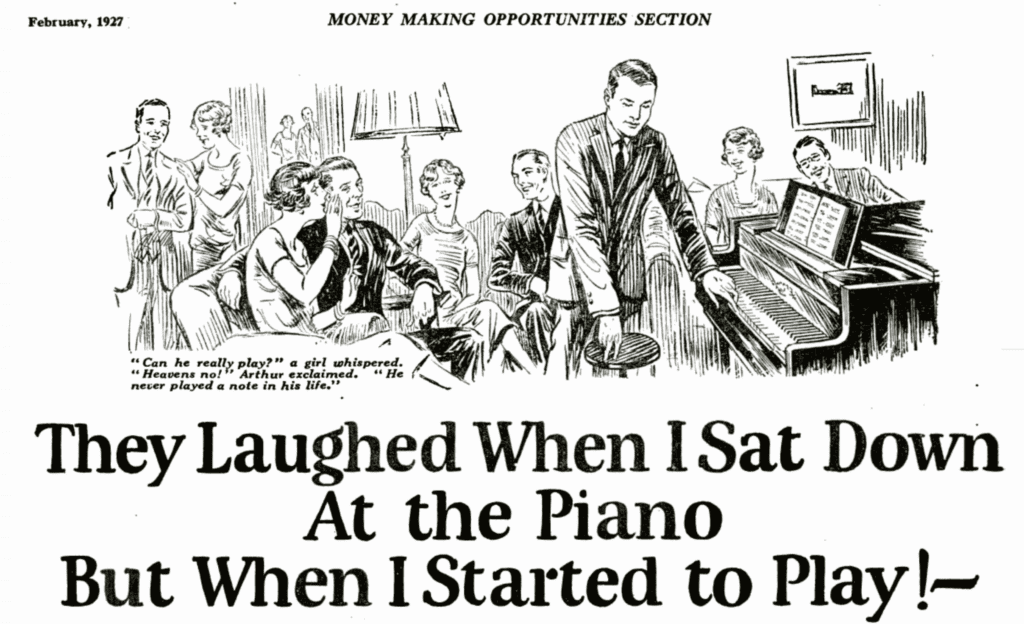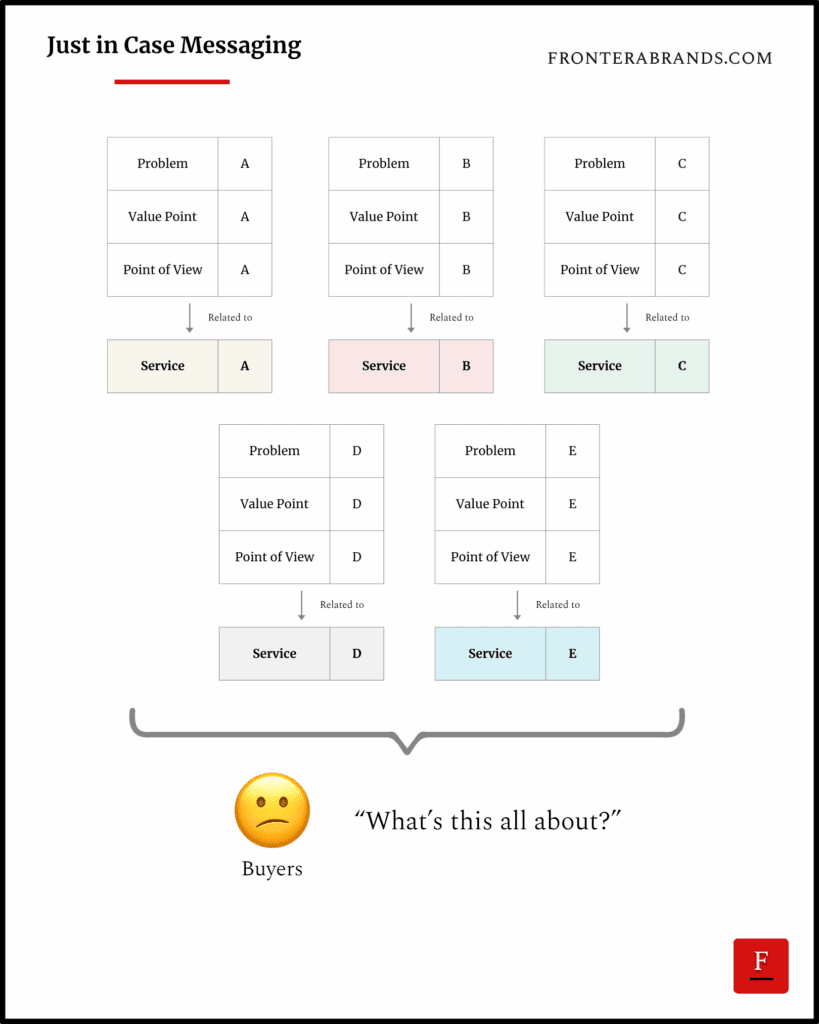Weak positioning causes a vicious cycle for every firm. It goes like this: You lack clarity around your ideal client profile, the specific problem you solve for them, and how you solve it differently. That causes you to have generic messaging. That causes your website, content, and ads to get ignored. That causes buyers to see you as interchangeable with hundreds of other firms. That causes you to lack pricing power. That causes you to have low margins. That causes you to have a low budget...
16 days ago • 1 min read
Boutique consulting firms make most of their revenue from a single service. But that core service gets only a tiny share of their messaging. You know why? Because they fear losing out. “What if somebody is looking for our other offers?” “What if we miss an opportunity?” So they list 10 services on their websites. Their content talks about 10 different value points related to different services. They hedge. But this ‘just in case’ messaging kills sales. Warren Buffett has a quote I like:...
25 days ago • 2 min read
Some boutique consulting firms are still doing marketing like it’s 2010: They rely on their partners’ networks for new business. They post some random content. And they occasionally hire an agency to do mass outreach campaigns. These tactics worked fine 15 years ago. But the world has changed since then. Going through a pandemic. The AI wave. Smartphone ownership levels and social media usage. Everything is different. And together with the world, how B2B buyers buy high-value services has...
about 1 month ago • 6 min read
Copywriting legend Gary Halbert goes to prison for tax fraud. The conditions are harsh. He doesn’t know if he’ll survive in Boron Prison for long. So he writes letters to his son to teach him everything he knows about copywriting and marketing. And later his letters became the famous book: The Boron Letters. Gary Halbert In one of the letters, he tells about a question he asked his copywriting students: “If you and I both owned a hamburger stand and we were in a contest to see who would sell...
about 2 months ago • 4 min read
I don’t know how it was for you. But when I prepared for university exams, three wrong answers erased one correct answer. When it comes to marketing, it’s worse. One negative association cancels out three positives. Because people have a negativity bias. Negative things have a stronger and longer-lasting impact on emotions and memory than positive ones. Social psychologist Roy Baumeister and his colleagues wrote a paper on this. And its title explains the idea perfectly: “Bad is stronger than...
2 months ago • 4 min read
Every business has dozens of problems at any given time. Even thriving ones. A new regulation comes up and you have to comply. You have to hire but can’t find the right candidate. Or your clients churn and you have to find out why. Being in business means dealing with problems. It’s the same for your potential clients. The problem your firm claims to solve is among a huge list of problems your buyers have. They have limited time and resources. But many problems to solve. So how do they decide...
3 months ago • 4 min read
The biggest mistake in B2B messaging is copying consumer brands. I know. Who doesn’t want to be inspirational like Nike? Who doesn’t want to influence buyers with a strong mission like Patagonia’s? But think about it. These are consumer brands. They sell commoditized products. A jacket is a jacket. No matter what brand you buy from, the product functionally does the same thing. So to differentiate themselves, consumer brands have to give intangible meaning to their tangible products. They...
4 months ago • 3 min read
In 1970, Listerine’s marketing department was feeling the heat. P&G had launched a new mouthwash brand as a competitor a few years before. They called it Scope. And they attacked Listerine’s obvious weakness — taste. Listerine burned like medicine. Consumers knew it. So Scope entered the market using taste as its differentiator. They claimed a mouthwash didn’t have to taste bad. And they were quickly gaining market share with aggressive ad campaigns. “Scope fights bad breath without giving...
4 months ago • 3 min read
Most marketers think social proof sells. But it doesn’t. It reassures. And this difference changes how to do messaging right. Imagine going to a B2B brand’s website. You’d like to figure out what they do. But you struggle. Because first, you read an aspirational mission statement that means nothing. Then they bombard you with social proof: “We helped this many clients.” “We generated this much revenue.” You keep scrolling to find an explanation of what the hell this brand does. But no chance....
5 months ago • 3 min read









